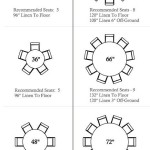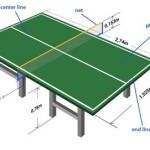What Is The Definition Of Water Table In Geography?
The water table, a fundamental concept in geography and hydrology, represents the upper limit of the zone of saturation within the Earth's subsurface. This zone is where the spaces within the soil and rock formations are completely filled with groundwater. Understanding the water table is crucial for managing water resources, predicting groundwater availability, and ensuring the stability of infrastructure.
The Formation of the Water Table
The water table's formation is a result of the interplay between precipitation, infiltration, and groundwater flow. When rain falls on the ground, a portion of it infiltrates the soil and rock layers. This infiltrated water, driven by gravity, seeps downwards until it reaches an impermeable layer that prevents further downward movement. The water then accumulates above this layer, saturating the surrounding soil and rock. The upper boundary of this saturated zone is the water table.
The water table is not static. It fluctuates in response to various factors. During periods of heavy rainfall or prolonged snowmelt, the water table rises as more water infiltrates the ground. Conversely, during periods of drought or high evapotranspiration, the water table lowers as the water is drawn upwards by plants or evaporates from the surface. This dynamic nature of the water table underlines its sensitivity to changes in precipitation patterns, human activities, and geological conditions.
Key Factors Affecting Water Table Levels
The water table's level is influenced by several key factors, including:
- Precipitation: The primary source of groundwater recharge, significantly affecting water table levels. Higher precipitation generally leads to higher water table levels.
- Evapotranspiration: The water loss from the surface through evaporation and plant transpiration can lower the water table, especially in arid and semi-arid regions.
- Geology: The type of soil and underlying rock formations influence the rate of infiltration and groundwater flow, impacting water table levels. Permeable materials like sand and gravel allow for faster infiltration, while impermeable layers like clay restrict water flow.
- Topography: The shape of the land influences the direction and rate of groundwater flow, affecting water table levels. In hilly areas, the water table slopes downward, while in flat areas, it is relatively uniform.
- Human Activities: Activities such as irrigation, urbanization, and groundwater extraction can significantly alter water table levels. Excessive groundwater pumping can lead to a decline in water table levels, potentially causing subsidence and other environmental problems.
Implications of Water Table Fluctuations
Understanding water table fluctuations is essential for various reasons:
- Groundwater Availability: The water table directly influences the availability of groundwater for domestic, agricultural, and industrial uses. Lower water table levels can limit access to groundwater resources and create water scarcity.
- Ecosystem Health: The water table plays a vital role in maintaining healthy ecosystems. It provides water for plants and animals, supports wetlands and riparian areas, and influences the distribution of species.
- Infrastructure Stability: Water table fluctuations can impact the stability of infrastructure, particularly in areas with high groundwater levels. Excessive groundwater pumping can lead to subsidence, damage to roads, buildings, and other structures.
- Land Subsidence: The depletion of groundwater can lead to land subsidence, a gradual sinking of the ground surface. This phenomenon can cause significant damage to infrastructure, disrupt water flow, and alter landscapes.
Monitoring water table levels through observation wells and remote sensing technologies is crucial for managing groundwater resources effectively. Sustainable water management practices that consider the impact on water table levels are essential for ensuring the long-term availability of groundwater and the health of our ecosystems.

Water Table Definition Depth Examples Lesson Study Com

Water Table Aquifer What Is Hydrology

Water Table Wikipedia

What Is Groundwater The Foundation

8 M Throughflow And Groundwater Storage

Water Table

How Groundwater Is Recharged Logicladder

Groundwater Ck 12 Foundation

Kgs Sedgwick County Geohydrology Ground Water
Groundwater Wikipedia








